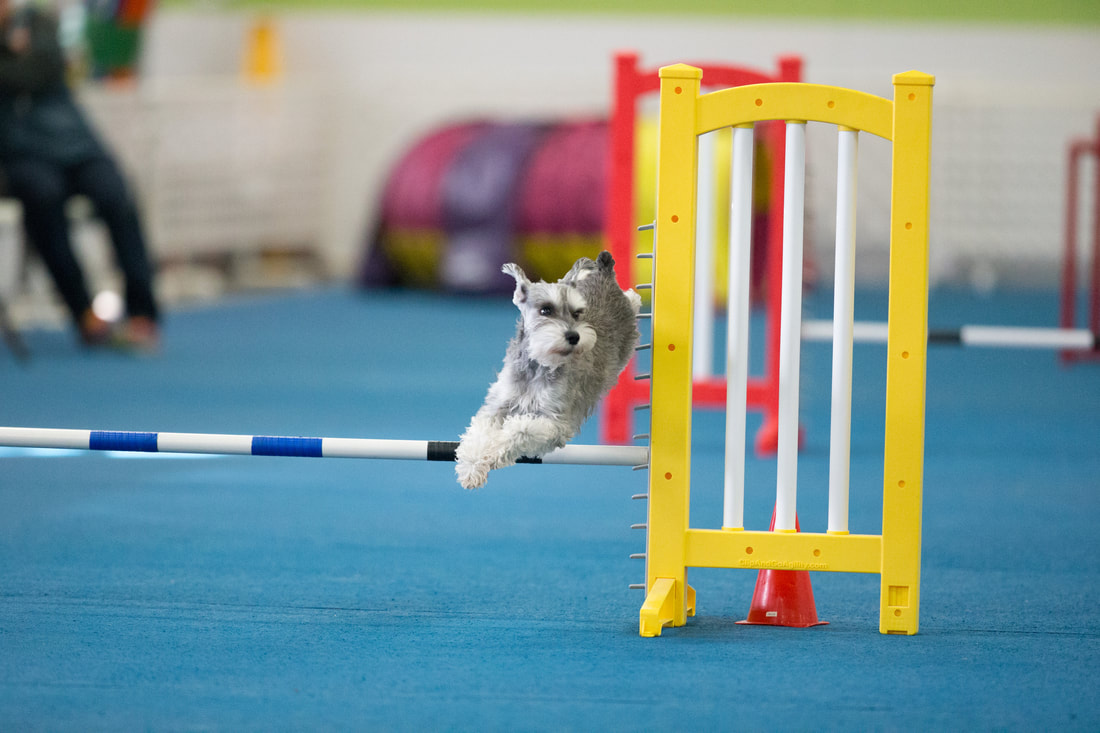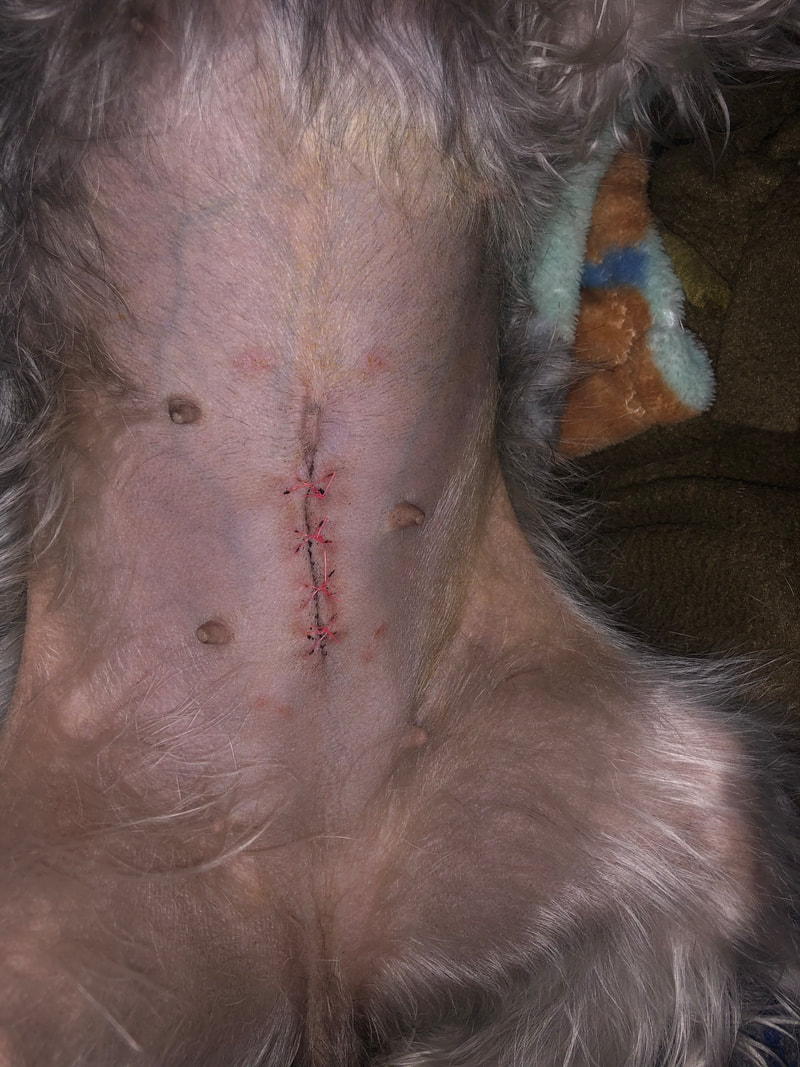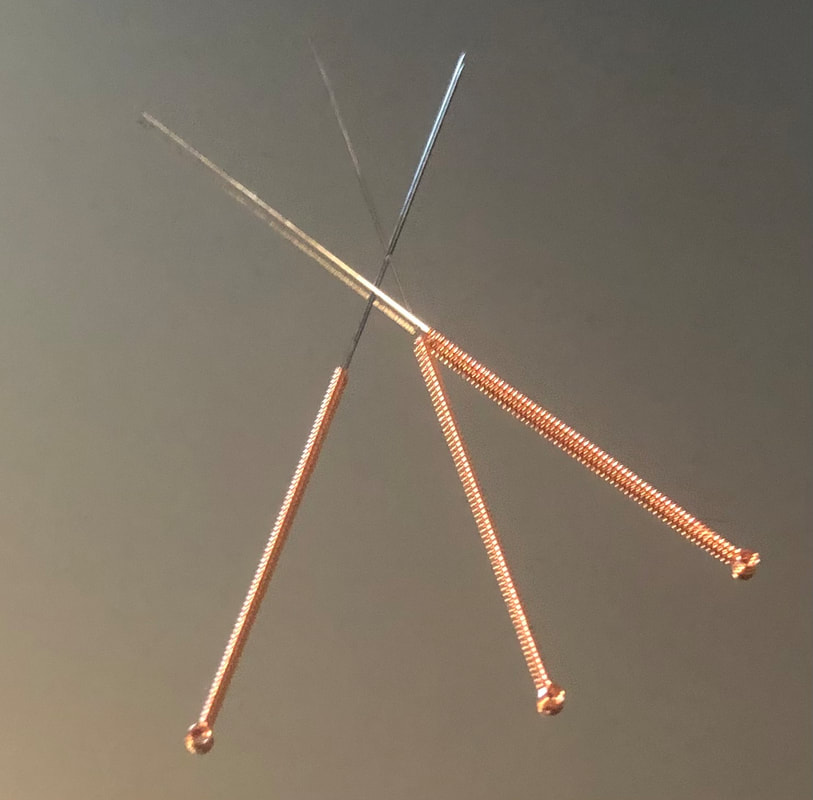Over the next 12 weeks I will create a blog series that incorporates weekly progress updates of my 4-year-old mini schnauzer Rainey, as she recovers from the worst kind of spay procedure - an emergency spay due to pyometra, a life threatening uterine infection. To make this series more than your average fitness story I will also include how recovering from an abdominal surgery fits into the spectrum of Traditional Chinese Veterinary Medicine (TCVM). TCVM looks at the whole patient, and as such it contains 5 Branches - acupuncture, Tui-na massage, nutrition or Food Therapy, herbal medications, and physical activity.
needed. Then 2-3 days a week for 5 to 10 minutes she receives fitness/conditioning training where we focus on different muscle groups and proprioception, as well as continuing to build the propulsive force for driving off her back end. She also performs cardio High Intensity Interval Training (HIIT) on the land treadmill for 10 minutes 1-2 days per week. Then 2-3 weekends per month, before COVID, and 1 weekend a month or less now, we participate in agility trials. There she would run 4 to 6 runs a day for 2 to 3 days in a row. She would receive off days before and after competition. Then there’s scent work training, which only occurs 1-4 times per month. That doesn’t seem physically demanding, but it can be. Rainey is just over 12.5 inches tall. Some of her searches have her jumping on/off tables, standing on her back legs, or crawling under things. Also, the mental demand of scent work is extremely high. The dog must think, while smelling and following an odor as it fades in and out of existence, until finally they hit the cone of scent and drive to the source. We will typically perform 6 searches in a short time frame. As you can see, this little dog is very busy and on January 11th this all came to a screeching halt as Rainey was rushed to emergency surgery.
until week 6 post-operatively. Granted, these injuries typically occur on a weight bearing limb. When we discuss the linea alba we are not necessarily weight bearing, but we are bearing the weight of the abdomen. And in the case of Rainey, she has a 1.75-inch incision in her 8-inch xiphoid to pubis linea alba, therefore the incision encompasses 21.8% of her total linea alba. It’s a well-known fact that an animal and humans’ core is their driving force for speed, and a strong core aids in a strong back. If an animal has a strong core, they will inherently have a strong back, which will aid in their overall comfort, speed, and injury prevention. Therefore, it can be assumed that if the time and steps are not taken to secure proper healing of the linea alba the patient will suffer with a weaker core, therefore potentially weaker back, slower ground speed, and possibly increased susceptibility to injury, including iliopsoas strains. However, to my knowledge no actual data supports this hypothesis, but my clinical studies of anatomy and physiology, as well my experiences with canine and human athletics do. As this series unfolds, we will discuss further how the canine core supports this hypothesis and why a strong core is so important.
2 Comments
Laurie Gray
2/4/2023 09:52:47 pm
My 5 year springer bitch diagnosed with pyo, surgery was two weeks two days ago. I am thinking she should not start back at her beginner agility till end of March. Would this be reasonable? Her incision is 12 inches long, very well approximated, staples out day 14, no redness or discharge She very much back to herself, eating well, but just going on walks on leash and loose in the back yard, I try to keep her playing with the other(3) dogs to a minimum. Any thoughts would be appreciated, I was so happy she was alive, never really asked my veterinarian.
Reply
Dr. Shantel
2/6/2023 08:54:47 am
Hello! I'm so glad she is doing well! Yes, end of March to return to agility is good. I would start working on her foundation exercises now and she can go back to no jumping or contacts at 4 weeks post-op. And then each week increasing her fitness and what she's doing in class. If she was a pretty fit girl going in, then she should be good to go back to jump height by end of March. How fit they are going in determines how fast they recover.
Reply
Leave a Reply. |
AuthorDr. Shantel Julius, DVM Archives
April 2021
Categories |




 RSS Feed
RSS Feed